CLOSE
Search for “” keywords, total search results
CLOSE
Search for “” keywords, total search results
2020.October
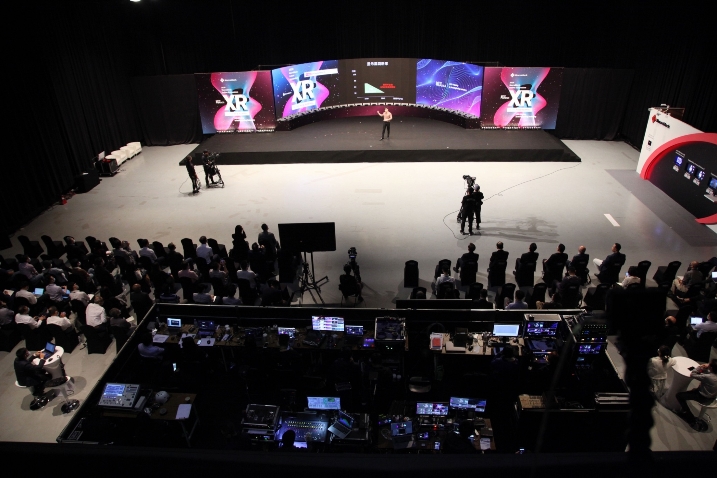
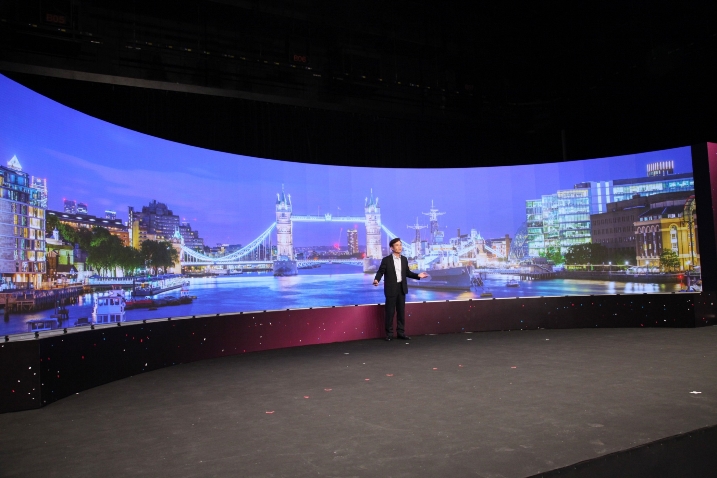
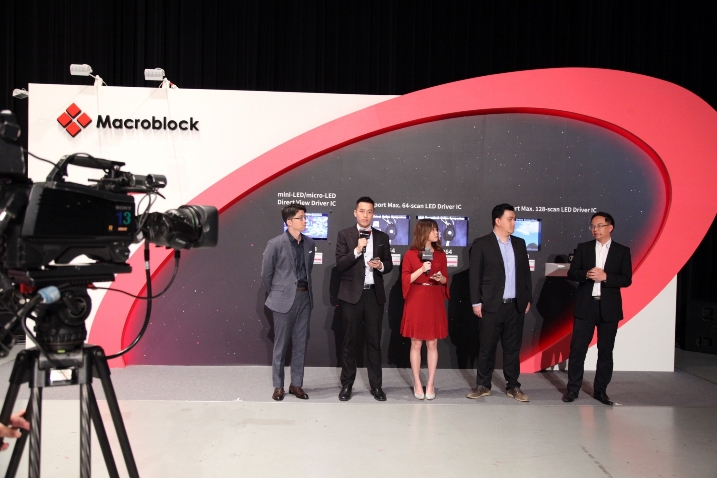
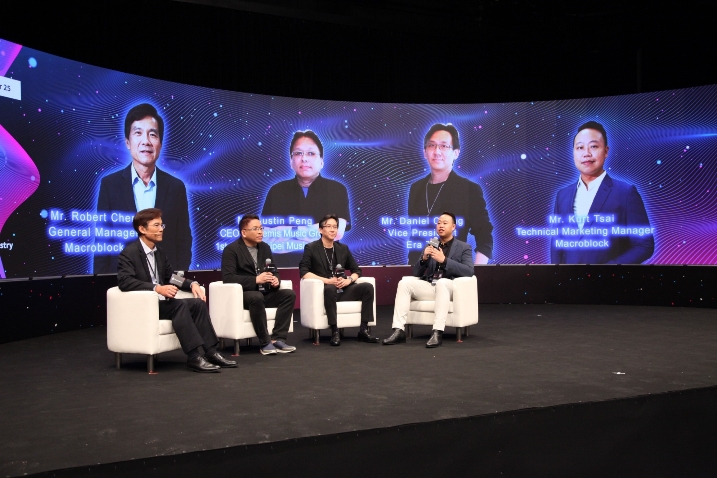
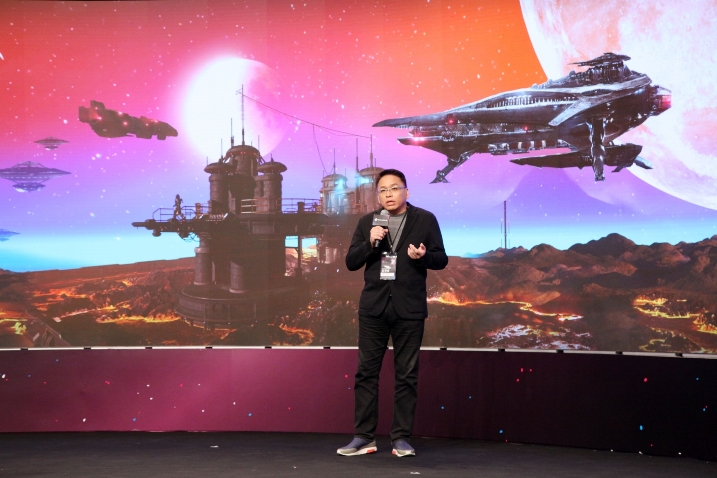
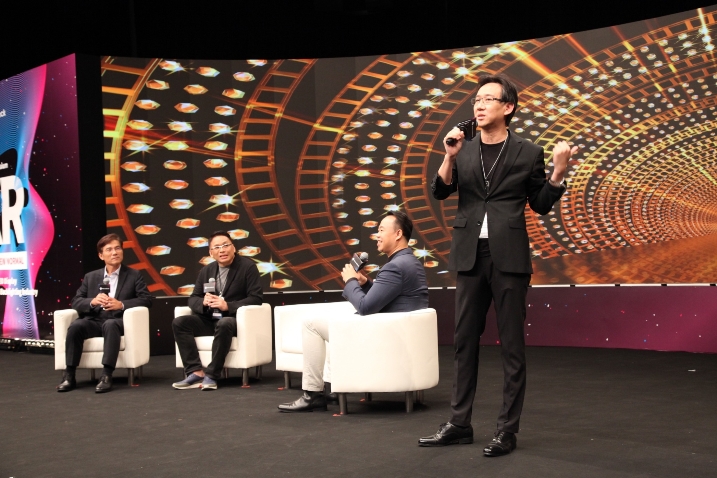
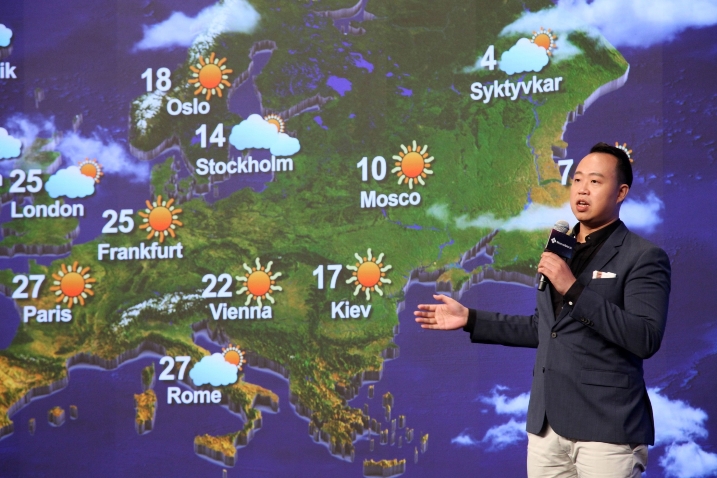
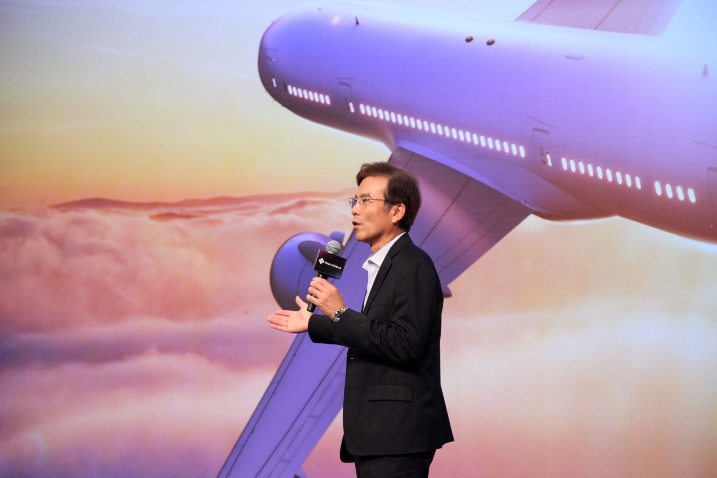
Macroblock held an “XR in the New Normal” symposium at the biggest TV studio in Taiwan on September 25. The symposium went online for the first time with limited seats at the venue. A stunning curved LED display on the stage catches audiences’ eyes immediately. With 12 meters wide and 3 meters high, the 1.25mm pixel pitch, curved LED display with spectacular visual effects creates immersive experiences to audiences as well as presenters on the stage. The following paragraphs recap the live-streamed symposium.
Opening Remark: XR in the New Normal
At the beginning of the symposium, Mr. Robert Chen, General Manager of Macroblock, immersed himself in front of Tower Bridge across the River Thames in London, using the curved LED display on the stage as a backdrop. The opening remark responds to a trend: the COVID-19 pandemic speeds up the adoption of extended reality (XR) technology on all kinds of displays for virtual learning, meetings, events, and performing purposes. XR is a combination of virtual reality (VR), augmented reality (AR), and mixed reality (MR). The adoption of XR on LED displays or LED screens grows rapidly this year especially for TV or film productions, gaming monitors, and simulators because this escalates the quality of experience for audiences and performers. Therefore, high quality visual effects on LED displays become even more critical. Macroblock has brought up NEW BASICS concept with six elements for LED driver ICs to meet the requirements of higher standard LED displays, and NEW BASICS concept can be an index for selecting the right LED displays for the right applications.
Fine Pixel Pitch LED Display Solution in XR Trend
When adopting XR technology on LED displays for film productions, “HDR-optimized”, one of the elements of NEW BASICS is strongly recommended when selecting the specifications of LED driver ICs. HDR-optimized LED driver ICs may run at a refresh rate of 3,840Hz and output a true 16-bit grayscale simultaneously on 32-scan or above time-multiplexing fine pitch LED displays. More importantly, Macroblock debuts Grayscale Boost technology to allow driver ICs to achieve a frame rate at 120FPS (frames per second) and still keep 16-bit grayscale performance on LED displays. Comparing with videos with 60FPS, motions at a frame rate of 120FPS are exceptionally fluid, which is vital for filming or gaming. Macroblock’s HDR-optimized LED driver ICs, MBI5264 and MBI5864, are suitable for high frame rate applications.
Another trend of LED display industry is the increased scan number for smaller pixel pitches or for decreasing the counts of LED driver ICs. However, the challenges of increased scan number include the brightness and refresh rate. Macroblock launches a value solution to meet these market requirements for 1.2mm to 2.0mm pixel pitch LED displays with maximum brightness of 600 nits. The value solution is a combination of an LED driver IC and a MOS switch, that is, a 16-channel LED driver IC to support 65 to 128 scans, MBI5268, along with a MOS switch at maximum current of 3.5A, MBI5988. With PWM enhancement and Grayscale Boost technologies, MBI5268 achieves higher number of scan and high refresh rate while maintaining 13-bit grayscale performance.
In addition, Macroblock unveils an in-house “LED-Probe” APP at the symposium. LED-Probe is a simple tool for users to measure refresh rate, contrast, and color temperature of LED displays.
micro-LED Display Driving Technology
As large-format micro-LED displays for home becomes possible, Macroblock has developed highly-integrated LED driver ICs (MOS-embedded) for micro-LED displays, such as MBI5864, a 48-channel, 64-scan micro-LED driver IC with scan-sharing architecture, providing ±1% output current accuracy per channel and per chip to improve image quality. The overall trend of micro-LED displays includes shrink pitch, small current, slim design, compact package, and different substrates. Macroblock has dedicated to micro-LED technologies for years and will continue to develop the corresponding IC to fit the different driving schemes.
The Key Role of Full Array Local Dimming (FALD) mini-LED Backlight
Consumers have been asking for slim, neat, and better picture quality for their display devices, and FALD mini-LED backlight technology may fit the needs. In response to slim, neat and picture quality, Macroblock has implemented multiplexing architecture for more dimming zones, high integration of mini-LED driver ICs for fewer components and easier design and layout on PCBs, and black-frame insertion in mini-LED driver ICs to minimize motion blur on display devices. Macroblock has a complete deployment of FALD mini-LED backlighting driver ICs for different sizes display devices from TVs, laptops, tablets, to wearable or automobile devices.
Presenters also demonstrated the latest technologies and products at the symposium, so that audiences may have a better understanding of the performances of the above-mentioned technologies and products.
“XR in the New Normal” Panel Discussions
Topic 1. Virtual Production for the Film Industry
LED displays are replacing green screens in film industry, which is obviously true when we see the success of “The Mandalorian,” the Star Wars universe show on Disney+ for using the idea. Mr. Austin Peng, CEO of Artemis Music Group, and Mr. Daniel Chang, VP of Era TV, brought up the benefits of LED displays as green screens with XR technologies: shortening the production schedule especially now the COVID-19 pandemic making travel almost impossible, cutting down the production cost, and most of all, creating a more immersive and intuitive environment for filmmaking. Mr. Robert Chen, General Manager of Macroblock, further emphasized the importance of high quality and reliability of LED displays for film production including the HDR visual effects, and the image details at low-grayscale on LED displays.
Topic 2. Immersion for TV studio
For broadcasting or TV studios, LED displays become popular for news reporting or show performing backdrops. Daniel is optimistic about the adoption of high quality LED displays as backdrops in TV studios as XR technology becomes mature. Austin expects to enjoy more immersive experiences thanks to the advancement of LED display technology. Robert indicated that a smooth live streaming in the TV studio requires stable video output and fast data transmission, and choosing the right LED driver ICs for LED displays are essential to ensure the success of video shooting.
Topic 3. Advanced LED Displays for Staging
LED displays are widely adopted on stage for its gorgeous visual effects. However, Daniel urged for higher quality and smaller pixel pitch LED displays for staging since online concert or virtual stage becomes a new trend due to the impact of Covid-19 pandemic. Austin also highlighted the importance of power consumption and heat generation of LED displays for staging because these two factors have big influence on the air quality in the concert or stadium, which may result in unpleasant experiences to audiences and an increase of electricity fee. Robert echoed the issues and re-emphasized that Macroblock’s New Basics include not only visual effects but also power saving as key factors for high quality LED displays.
Topic 4. Flexible LED Displays for Enterprises and Architectures
As LED displays are very flexible in shapes, many enterprises and buildings have adopted LED displays as part of the decorations or exhibition of corporate images. Austin and Daniel also look forward to more business opportunities from the interactions of LED displays with visitors. Robert affirmed that LED displays have been used for indoor applications for years, and with the advanced XR technology, there will be more innovations and new business opportunities in LED display industry in the near future.
The above paragraphs provide only a brief of the symposium. For more details and Q&A sessions, please refer to the video link below: